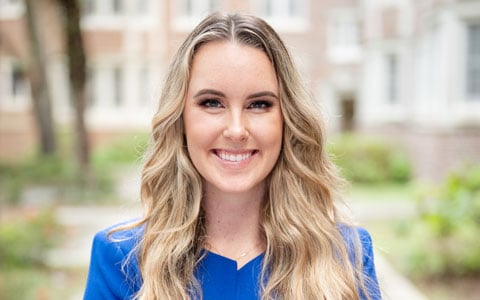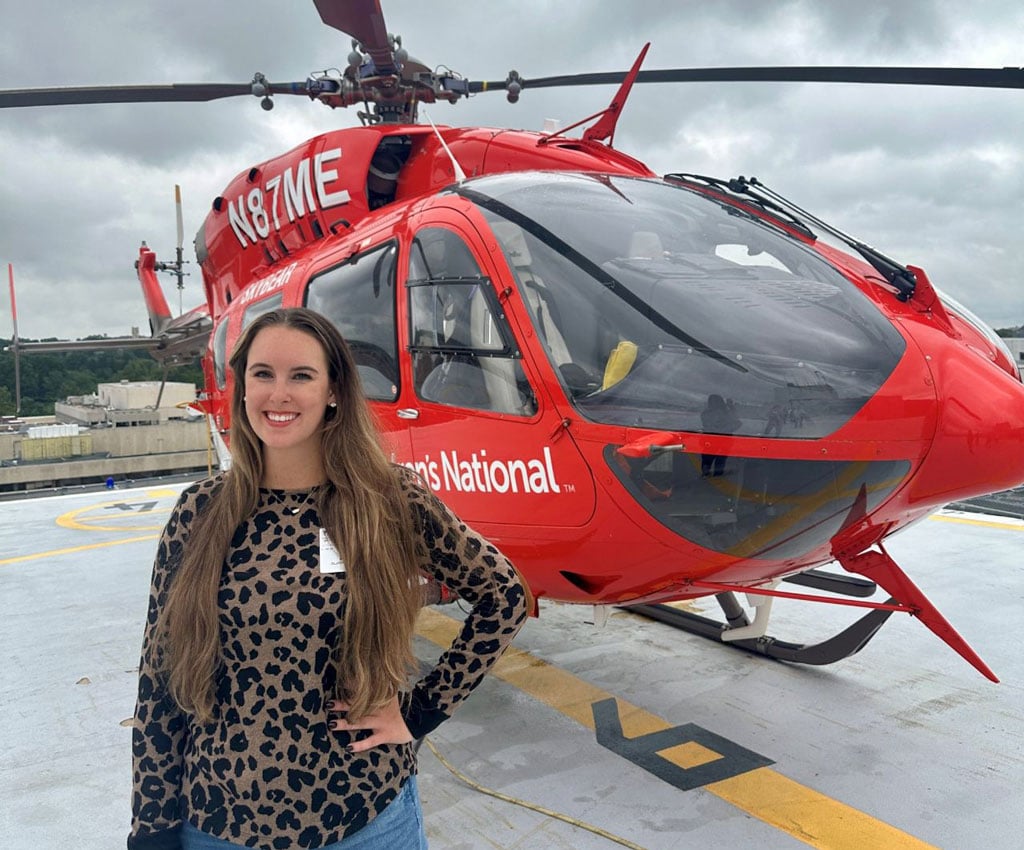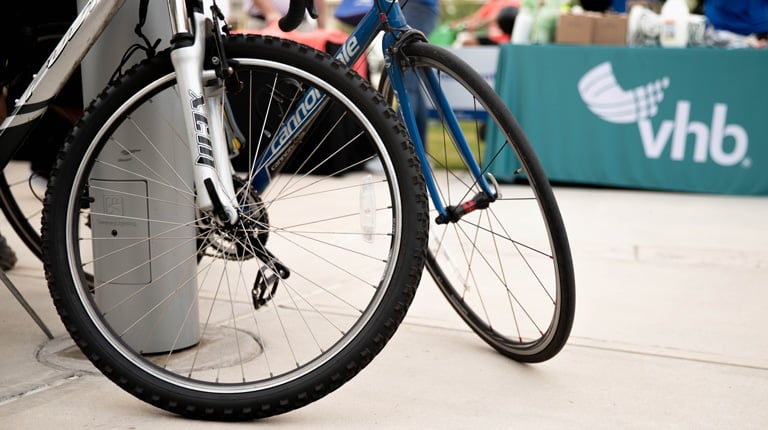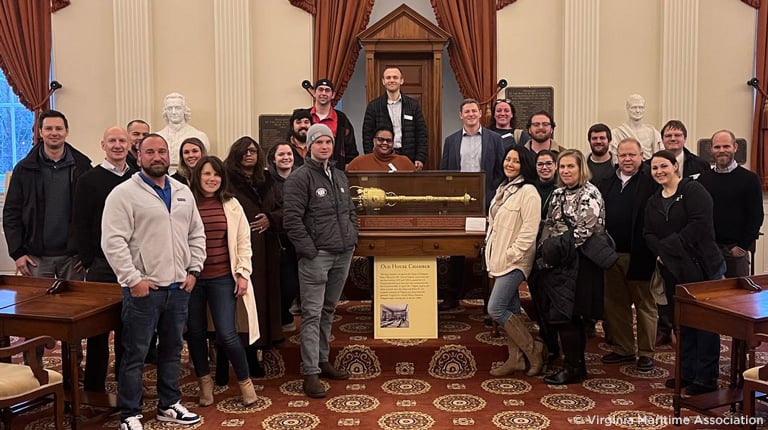
The Tampa Bay area of Florida has experienced significant expansion in recent years. Thousands of new residents flock to the city yearly, drawn by economic growth, residential and commercial development, the coastal lifestyle, and improved public transit. Marisa Blackwood, PE, MBA, Project Manager for the Land Engineering team for VHB Gulf Coast offices in Tampa and Sarasota, is at the heart of such growth. Her broad experience includes site design, utility engineering, permitting, and stormwater management for a range of institutional and healthcare projects.
We talked to Marisa to get her insight into the present and future of institutional, healthcare, and aviation projects in the rapidly growing region.
VHB: You’ve been in land development for eight years and with VHB for six. How did you get started in engineering?
Marisa: My dad was an electrical engineer, and my grandfather was a diesel engineer. Math, innovation, and development were always topics of conversation at the dinner table growing up. My family exposing me to creativity and encouraging me to ask questions helped me decide to be an engineer. Well, that along with my love of playing The Sims as a kid. I’m particularly motivated by my current development work in the VHB Institutions market healthcare practice, as it dovetails with my life goal of improving communities through infrastructure.
VHB: You’ve done a lot of design work in the healthcare environment. What’s unique about designing for healthcare facilities?
Marisa: From a civil design perspective, I put myself in the shoes of someone visiting a healthcare facility for the first time and empathize with what they’re thinking and feeling when they traverse and interact with a site. The emotions someone feels when going to the grocery store are different than when driving a loved one to an emergency room. In a heightened emotional state, someone might not see a stop sign or yield to a pedestrian. Healthcare requires another level of attention to the safety of employees, patients, and visitors—especially for coastal communities that experience extreme weather events. For example, from a utility design perspective, it’s hugely important to provide resilient and redundant sources of potable water. We also need to carefully consider what might end up in the sanitary sewer system and design a sewer system that will handle any foreign objects.
VHB: You’ve developed a specialty in the helipad component of institutional and healthcare facility design and mentor junior engineers in helipad design. How do you collaborate with stakeholders to deliver helipad designs?
Marisa: Helipad design requires knowledge of Federal Aviation Administration (FAA) criteria and allows me to liaison with other disciplines and personnel, including VHB offices outside Florida. I recently attended an informative Heliport Planning and Evaluation course presented by the FAA and Transportation Safety Institute (TSI), which conveyed the critical difference between theoretical criteria and the real-world insights shared by pilots.

Clients are asking us to design heliports capable of accommodating electrical vertical takeoff and landing craft (eVTOLs). Earlier this year I worked with an aviation team to develop a presentation and report about vertiport considerations covering the FAA, state, and city permitting process and how it relates to future vertiport installation and design to prepare communities for advanced air mobility (AAM).
AAM is differed from standard project management work in that it involves much more theory—how does our current knowledge project into the future? It’s exhilarating to be part of team that’s setting the foundation through workshops across the country.
VHB: What do you think are the most important emerging trends in your practice, and how can AEC firms contribute?
Marisa: Technology, particularly artificial intelligence (AI), is at the forefront of everyone’s minds. VHB jumped feet-first into harnessing AI to distinguish our client-focused services and enhance project delivery. We need to continue to explore how we can incorporate technology-enabled and data-informed solutions into our projects. Fast-paced evolution is required for companies in our industry to stay competitive. Lose the rigidity, roll with the punches, and focus on rapidly changing and adapting. One thing that helps VHB stand out is the OneVHB approach. There are so many talented people in our company. Tapping into this capability across offices and regions make us stronger.
VHB: As the Gulf Coast grows, what developments or features specific to the Tampa Bay environment can other regions of the U.S. learn from?
Marisa: From an economic standpoint, Tampa is incredibly insulated. People want to move and permanently live here, whereas other regions in the U.S. may see more cyclical trends like housing crashes and fluctuations in population. Where there is a steady stream of new people, there is an equally steady need for infrastructure in all sectors, not just housing. VHB Land Development serves this thriving industrial, institutional, and real estate market. Having a team that is as diversified as ours and can handle a diverse suite of land development sites and sectors helps us remain competitive.
The population boom means an increasing need for healthcare. We’re currently in the due diligence phase or design phase of many free-standing emergency room projects. These facilities provide access to hospital-level care in areas where a hospital might not be readily accessible or convenient. The increase in access to emergency medical services is a game-changer for healthcare. We’ve established a strong partnership with healthcare systems in Florida to respond to their evolving industry.
VHB: You’re noteworthy for your involvement with VHB’s Emerging Professionals employee resource group. How did you get involved?
Marisa: I led VHB’s Tampa Emerging Professionals Group for three years and now serve as the group’s Past Chair and advisor. I am proud to have started and planned the Gulf Coast’s Office Olympics event, book club, and a cake-decorating team-building event. The Emerging Professionals helped me develop valuable leadership, management, and communication skills through managing the group’s budget, calendar, and communications. Now I’m a mentor paying it forward through planning Lunch & Learns for the Land Development team, which allows younger designers to expand their knowledge while gaining Professional Development Hour (PDH) credits.
Learn more about how VHB Gulf Coast is elevating communities.


